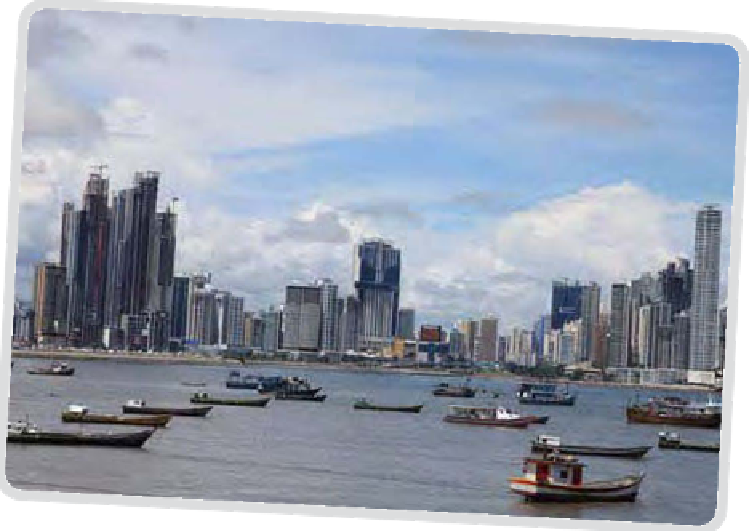Travel Reference
In-Depth Information
city of futuristic skyscrapers clustered around the canal. Greg Quail
and the Red Cross had done their advance publicity well, and children
and adults, including local entertainers and Red Cross folk, came out
to run with me. I was given the signal honour of being allowed, with
a police escort, to run over the bridge that spans the Panama Canal;
it being a trafic-only bridge, it's a privilege only rarely extended to
runners.
The 77-kilometre-long Panama Canal was cut and constructed
between 1904 and 1914 to allow shipping to pass from the Pacific to
the Atlantic Ocean. Before the canal was constructed, ships had to sail
about 10,000 kilometres further, around Cape Horn. The canal was
largely paid for by the United States, and for more than 60 years they
held sovereignty over it.
I took a short break in Panama City's Balboa Park, named after the
16th-century Spanish adventurer and first European to see the Pacific
Ocean, Vasco Núñez de Balboa. There is a statue of Balboa in the park;
he stands proudly brandishing a sword in his right hand and a Spanish
flag in his left. Around him, Panamanians were ambling through the


